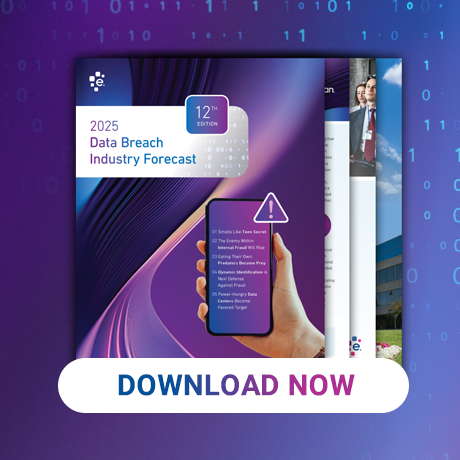As we look ahead to 2017, big changes are on the horizon. What does it all mean for the financial services space? Here are five trends and twists coming over the next 12 months, ready to push new boundaries and in many cases improve the customer experience as it pertains to the world of credit and finance.
1. President Trump heads to Washington.
The 2016 election is a distant memory. The voters have spoken, and policy makers in Washington are coming to grips with the reality that President-elect Trump and the Republicans will control all levers of government beginning mid-January. So what does this news mean for the financial services industry?
Obviously, there will be realignment of policy priorities, as reflected in a new approach to regulation and legislation. Federal priorities with respect to taxation and government spending will also be realigned to reflect the economic agenda of President-elect Trump and the Republican Congress. Much of the Administration’s first 100 days is expected to be focused on healthcare reform, tax reform, national security and appointment of a Supreme Court justice.
Soon, however, many expect the Trump Administration and Republican controlled Congress to move forward with a deregulatory agenda that will likely include reform of the Dodd-Frank Act and the Consumer Financial Protection Bureau. Will President-elect Trump slow down and roll back regulations relating to arbitration and payday lending, both of which are in the proposed rule stage? Trump is also likely to support efforts by Republicans in Congress to reform the CFPB’s structure, including replacing the single director with a bipartisan commission and placing the CFPB under the Congressional appropriations process. Reform of Dodd-Frank and/or the CFPB will require Republicans to gain some support from Democrats in the Senate given that 60 votes are required to break a filibuster.
There may also be a continued focus on what, if any, legislative or regulatory solutions are necessary to ensure a responsible and predictable regulatory environment for the FinTech industry.
What key regulations have shaped the financial services industry over the past 8 years?
Learn more
2. See the customers, score more customers.
Roughly 45 million Americans have either no credit history, or credit history that is too scarce or too stale to generate a credit score. Thus, innovators are seeking to expand responsible access to credit by looking to alternative forms of data and newer methods of analyzing this data to assess an applicant’s creditworthiness. From encouraging the use of rental data to utility and mobile phone payments, part of the solution rests on getting more companies to furnish credit data to the bureaus. With more insights, suddenly an “invisible” consumer becomes “newly visible.”
About 80 percent of the newly visible population falls into the younger generation category. The remaining 20 percent are likely immigrants, people where one spouse had all the credit and then added their other spouse later in life, or individuals who used to have credit but have since paid off their multiple lines and gone dark.
In 2017, an even greater emphasis will be on scoring more and recognizing these “newly visible.” More testing will be on alternative data sources and assessing how accurate they are in terms of predicting credit worthiness.
3. Pull it together people, the data that is.
Facebook, LinkedIn, and Netflix have become essential to modern life, and consumers of all generations expect to have their data connected and aggregated online. With their expectations set by other industries, people want at-your-fingertips access to money management and credit and loan approvals—and seamless experiences. The next generation of innovative financial technology delivers all of those things.
Data aggregators entered the financial services scene in the late 90s, with models “scraping” an individual’s financial information from sources such as banks, securities firms, retirement-plan custodians and insurance companies. This made it possible for financial institutions to gain some insight into their customers, but failed to create a complete financial picture.
Future aggregators will elevate the game, leveraging credit data and transaction level data to quickly assess ability-to-pay, income and other assets. For example, a consumer’s checking account information will truly become a part of the lending process. This is a win-win for lenders and consumers. It will streamline the lending process, allow for faster transactions, give lenders deeper insights about their customers and potential borrowers, and help some consumers change a thin-file consumer into a thick-file.
Imagine a world where income and asset verification happens in real time. No more waiting for consumers to gather and submit their W2s. No more returning to your customers and asking for even more paperwork to support their ability to pay. New income verification technology will grant lenders direct access to a consumer’s income details (as authorized by the consumer), and this will start NOW.
4. Sorry FinTech, you’re not immune to fraud.
The post-recession lending environment has brought many good things to the economy. Leading the way is rapid, frictionless underwriting focused on growth and the customer experience. As a result, more online marketplace lenders have emerged with their more “flexible” approach to credit risk assessment. While a lot of good has come from this evolution in financing, new challenges have surfaced – especially as it pertains to fraud prevention and credit risk management.
Many online lenders are falling victim to “loan stacking” fraud. This occurs when multiple loans are taken out by borrowers who slide through the automated underwriting process. These loopholes can result in multiple lenders making loans to the same borrowers, often within a short period, without the full picture of their rising obligations and declining ability to pay.
The same scenario took place during the past-mortgage crisis as we estimated at the time that First Party fraud may have accounted for more than one-quarter of all consumer credit charge-offs. Fast forward to today and online marketplace loan volumes in the U.S. have doubled every year since 2010 with analysts predicting that volumes could reach $90 billion by 2020. Consumers love the ease of access to these online loans. So do fraudsters.
As more consumers and small businesses flock to online marketplace lenders, these lenders have a growing responsibility in doing their part to report credit data to the bureaus, and mitigating fraud.
How to safeguard the OML space for fraud?
Learn more
5. A firm offer of credit, delivered digitally, just for me?
Consumers have received digital offers for ages. Purchase a few items online, opt-in to a few sites, and your email box suddenly feels like the most popular girl in school. But where do we stand with personalized offers, especially in the financial services space?
Many lenders continue to rely heavily on direct mail, but for some consumers, those offers will never be seen. Today, the world commands and demands a digital experience. And this applies to offers of credit as well. In 2017, lenders can and should target relevant credit offers to consumers in the spaces and platforms they spend the most time.
Email? Yes.
Online? Of course.
Social media sites? It can be done.
On a mobile device? Absolutely.
Solutions now exist to help lenders deliver relevant, firm offers of credit to consumers via multiple digital channels, including email, display advertising and social media. In short, they can now engage with consumers in the places and channels where they are consuming media today – giving them personal offers in a sequenced, trackable manner. Bye-bye shredder.
How many ways can you deliver a firm offer of credit?
Learn more
—
What are your predictions for 2017 as it pertains to the world of financial services? Only time will tell, but we’re certain regulations and the advancements in digital will mean big changes for all over the next 12 months.







